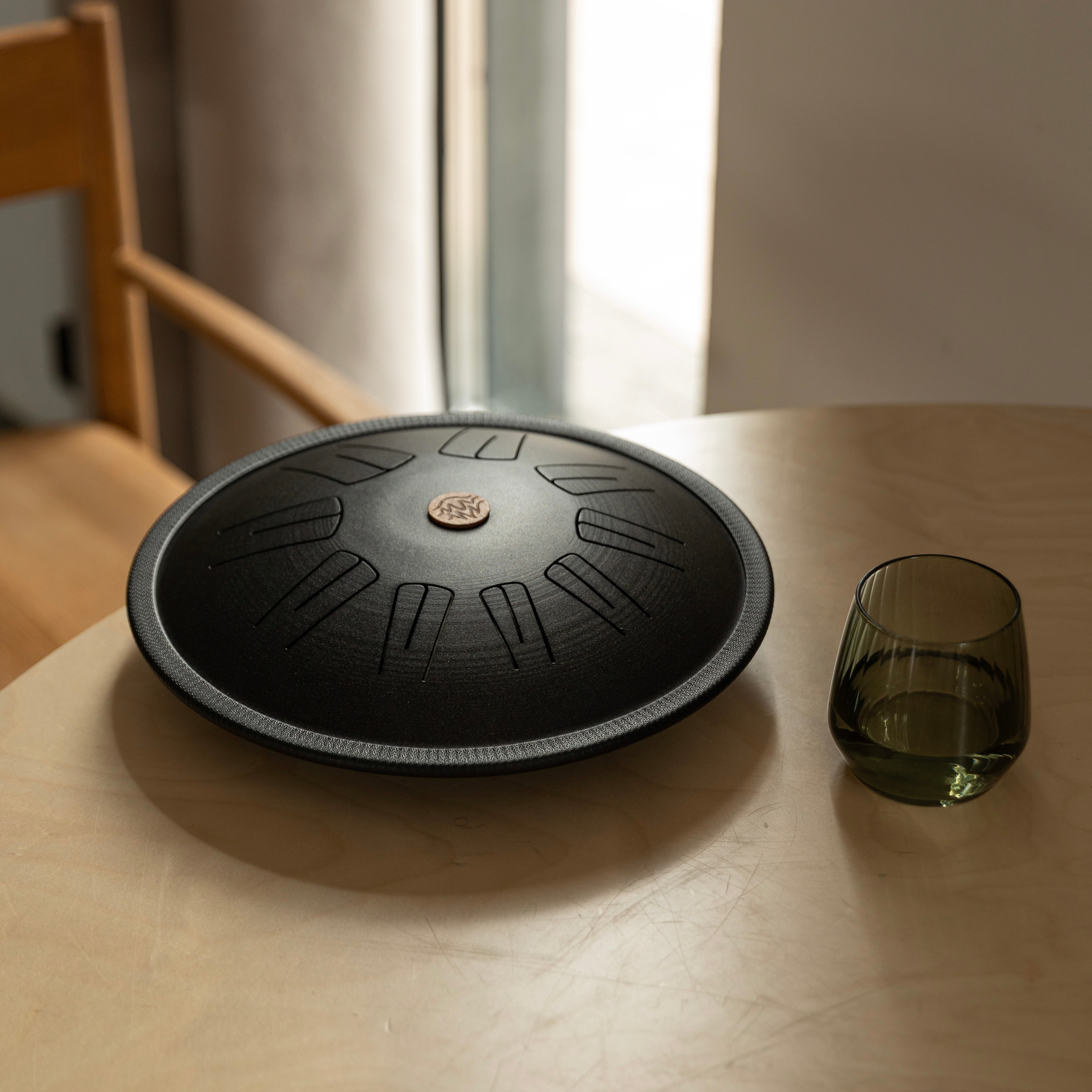Introduction
The Steel Tongue Drum is one of the most unique and beginner-friendly musical instruments of our time. At first glance, it looks like an aliens spaceships, but once you touch it, — it produces a warm, resonant sound that feels both meditative and uplifting.
Crafted from high-quality materials, this instruments features tuned tongues arranged in a circular pattern on it's surface. Each tongue produces a distinct pitch when struck, allowing for the creation of harmonious melodies and rhythms. The instrument's durable construction and ergonomic design make it accessible to players of all skill levels.
Tongue drums is steadily gaining popularity worldwide for its simplicity — anyone can pick it up and create beautiful melodies without musical education — and for its versatility, being used in music therapy, meditation, and relaxation practices.
It's a kind of hybrid between a drum and a keyboard instrument. Yes, you still play a drum, but it has notes like a piano. Only you don't have to find the "right" chords, because it's already done with the help of different Scales.
Because of this, the playing process becomes even more interesting, — by learnings new rhythms you'll automatically discover new melodies.

A Brief History of the Tongue Drum
Although the tongue drum is a relatively new instrument, it's roots go back centuries. Ancient cultures across Africa, Asia, and the Americas used slit drums to create rhythms for rituals and communication.
In the early 2000s, instrument makers began experimenting with metal versions of these designs. By cutting carefully measured tongues into propane tanks or steel shells, they discovered a new kind of instrument: compact, melodic, and deeply resonant.
One of the main figures was the experimental musician Felle Vega, who was the first to present his prototype of a new instrument "Tambiro by Felle Vega".
No less significant chapter in the history of evolution Steel Tongue Drum was the creation of the Hang drum, a percussion instrument developed in Switzerland. Inspired by the Hang drum's melodic capabilities, artisans began experimenting with alternative materials and construction techniques, giving birth to the Tongue Drum we know today.
Compared to the handpan — a related but more complex steel instrument — the tongue drum quickly became popular because it was easier to make, more affordable, and instantly accessible to beginners.
Structure and Sound Features
The sound is rich, warm, and meditative. Because most tongue drums are tuned to scales without “wrong notes,” even beginners can easily create beautiful melodies. This is why many people consider it the best tongue drum for beginners. A steel tongue drum usually consists of:
- Resonating body — made of steel from 1.5 to 3mm, shaped like a dome or cylinder.
- Tongues (notes) — precisely cut slits (Tongues) on the surface, each tuned to unique pitch, this forms a note.
- Tuning system — the tongues are measured and tuned to a specific scale, often pentatonic or diatonic, to ensure harmonious sound.

How to Play a Steel Tongue Drum
One of the reasons for the drum’s popularity is its simplicity:
Whether you're a novice or an experienced musician, playing the Tongue Drum is a rewarding and meditative precess. Beginners can start by exploring simple melodies and rhythms, gradually building confidence and skill. Advanced players can experiment with techniques such as finger tapping, palm muting, and percussive accents to unlock the instrument's full expressive potential.
Since the notes are arranged in a circle, melodies can be played intuitively without formal training. Many people start by watching a simple guide or tutorial on how to play a tongue drum and quickly discover their own style.
- Play with your hands for more natural, warmer tone.
- Or use mallets (sticks) for a clearer, more percussive sound.
Of course, it will be easier for beginners to start playing with sticks, because despite the fact that it's easy to play, — it should be remembered that playing with hands still requires certain skills. With daily practice anyone can learn play with hands quite quickly.
Why People Love It
The steel tongue drum isn’t just an instrument — it’s an experience. Musicians, therapists, and hobbyists highlight several benefits:
- Accessibility — anyone can start playing within minutes.
- Relaxation — it's calming sound makes it one of the most popular meditation instruments today.
- Creativity — it encourages improvisation and self-expression.
- Portability — small and lightweight compared to many traditional instruments.
These qualities make it equally appealing for professional musicians, meditation practitioners, and parents buying an inspiring musical gift.
In conclusion:
The steel tongue drum is more than just a trend — it’s a modern instrument that offers a captivating blend of history and craftsmanship, bringing music, relaxation, and creativity to people of all ages.
Whether you are looking for a instrument for meditation, a gift for a loved one, or simply want to buy a tongue drum for beginners, the Burning27 workshop invites you to embark on a musical journey filled with joy and discovery.



Leave a comment
This site is protected by hCaptcha and the hCaptcha Privacy Policy and Terms of Service apply.